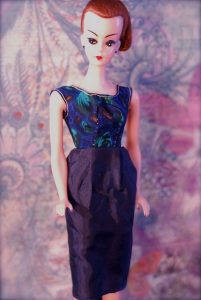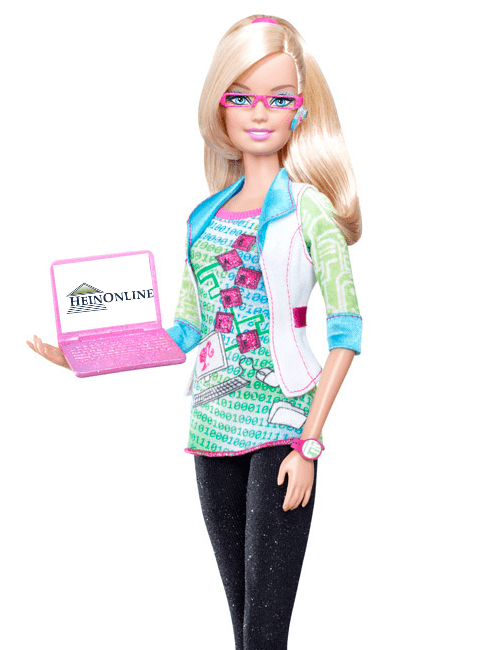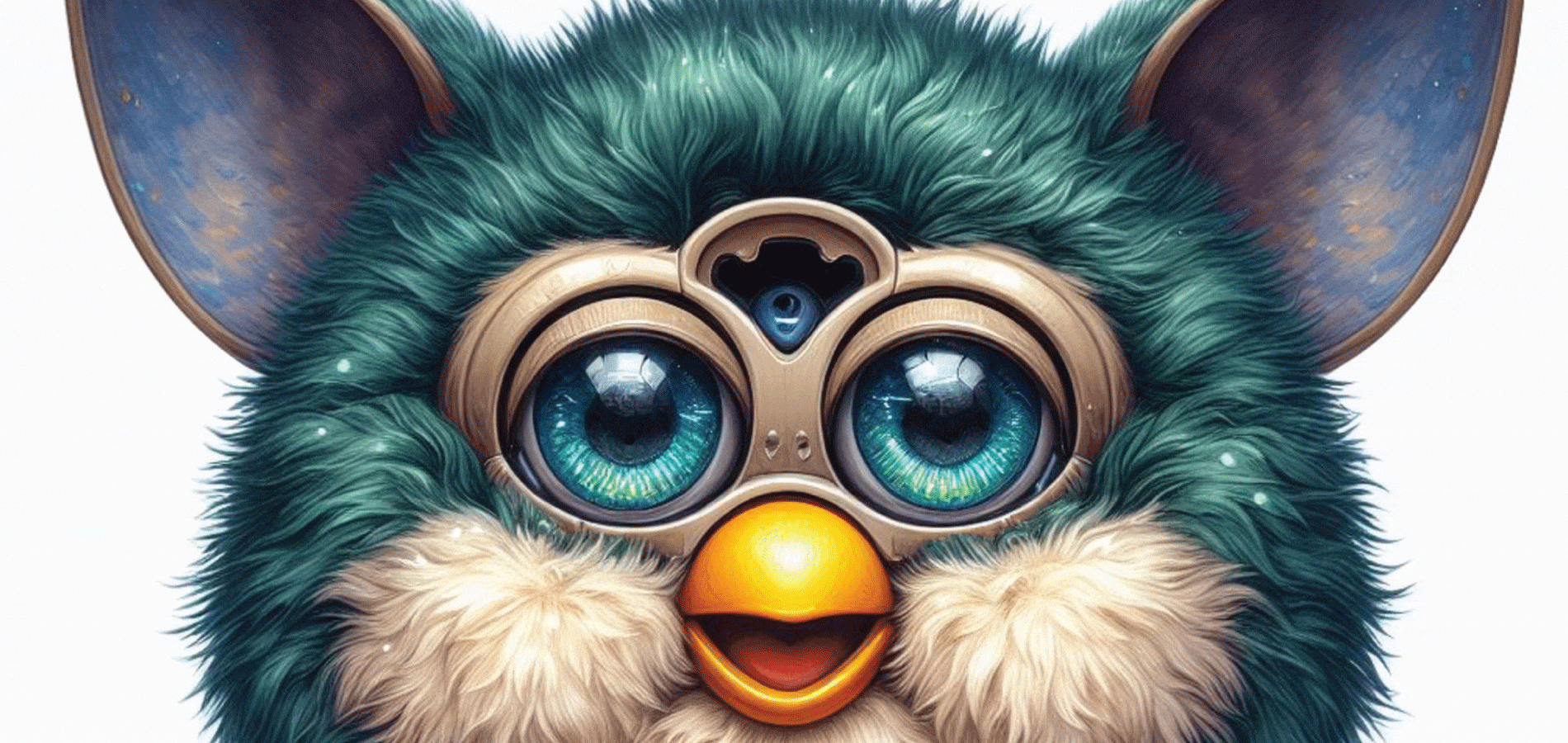Since Barbie emerged in all of her (often controversial) glamor on the shelves of toy stores around the world in 1959, she has affected nearly every area of pop culture. And inevitably, parent company Mattel hasn’t always been too thrilled about it. So, when Barbie wasn’t living it up having girls night at her Dreamhouse, you might find her at the courthouse. Let’s take a look at the history of Barbie and some of the lawsuits that the Barbie trademark has been a part of over the years, with the help of our Intellectual Property Law Collection, which contains more than 8 million pages of content relating to trademarks, copyright, and so much more!
The Birth of Barbie
The concept of Barbie began when creator Ruth Handler noticed her daughter Barbara enjoyed treating her paper dolls like adults, giving them adult roles and jobs. However, at the time, the majority of dolls created for children were baby dolls. Ruth suggested creating an adult doll for children to her husband, a co-founder of Mattel, but her ideas were turned down.

However, in 1956, while traveling Europe with her children, Ruth noticed a German sex toy called Bild Lilli,[2]Ann Bartow, Barbie in Bondage: What Orly Lobel’s Book You Don’t Owe Me: How Mattel v. MGA Entertainment Exposed Barbie’s Dark Side Tells Us about the Commoditization of the Female Body, … Continue reading which was an adult-bodied doll marketed to men and modeled after a popular comic strip. Initially, Bild Lilli was created for adults, but she grew in popularity with children who wanted to dress her up. Handler purchased the doll and showed it to Mattel as evidence that an adult doll could be successful with children. Ruth worked on redesigning the doll and named her Barbie, after her daughter. The Barbie trademark[3]749 Off. Gaz. Pat. Office TM 31 (1959). This can be found in HeinOnline’s Intellectual Property Law Collection. was filed on July 2, 1958 and published on September 15, 1959. Barbie made her official debut on March 9, 1959 at the American International Toy Fair in New York City, wearing her iconic black-and-white-striped swimsuit.
The First Lawsuit
The makers of Bild-Lilli were none too happy with Mattel and their “new” doll. Louis Marx and Company sued Mattel in March 1961, claiming that Mattel “infringed on Greiner & Hausser’s patent for Bild-Lilli’s hip joint” and that Barbie was a “direct take-off and copy” of Bild Lilli, while Mattel “falsely and misleadingly represented itself as having originated the design.” The case was settled out of court, and in 1964, Mattel bought the copyright and patent for Bild Lilli from Greiner & Hausser for $21,600. However, the legal grief between the two companies would continue (there were multiple other lawsuits[4]Mattel, Inc. v. Greiner & Hausser GmbH, 354 F.3d 857,864 (9th Cir. 2003). This case can be found in Fastcase. in decades to come.

RomitaGirl67, licensed under CC BY 2.0.
A couple decades later, in 1974, Ruth and Elliot Handler were both ousted from Mattel after an investigation showed that they had published false financial reports. However, the legal struggles for Mattel didn’t end there. Over the years, Mattel would go on a trademark frenzy,[5]Dan Hunter & F. Gregory Lastowka, Barbie, 18 TUL. J. TECH. & INTELL. PROP. 133 (2015). This article can be found in HeinOnline’s Law Journal Library and Intellectual Property Law Collection. snatching up phrases such as “Barbie Dreamhouse,” “Malibu Barbie,” “Barbie Life,” and “Barbie in Princess Power.” They’ve even applied the Barbie pink for trademark several times before. Additionally, Mattel has purchased several internet domain names that reference “Barbie.” With a company so protective of the whole concept of Barbie, which extends beyond the doll itself, there was bound to be some legal strife along the way.
The Real Barbie Car Is a Nissan
In the 1990s, automobile company Nissan ran two commercials that featured dolls that looked pretty similar to Barbie and Ken. In the first commercial,[6]Steven M. Cordero, Cocaine-Cola, the Velvet Elvis, and Anti-Barbie: Defending the Trademark and Publicity Rights to Cultural Icons, 8 FORDHAM INTELL. PROP. MEDIA & ENT. L.J. 599 (1998). This article can be … Continue reading Van Halen’s “You Really Got Me” plays in the background while the Barbie-like doll is encouraged into a Nissan by a doll resembling G.I. Joe, to the chagrin of our fake Ken. In the second commercial, the female doll is saved by the “G.I. Joe” doll after the Ken-like doll accidentally pushes her into a swimming pool. However, Nissan claimed that the dolls were named Roxanne, Nick, and Tad. Mattel didn’t buy it and claimed that the commercials caused “irreparable damage,” but they agreed to settle.
Are You a Barbie Girl? Ask the Judge.
“Barbie Girl” by Aqua. We all know it. We love it or hate it. Mattel was the latter. The single by this Danish-Norwegian band was released in 1997 and took the world by storm with its ridiculous lyrics and Barbie pink music video. Mattel wasn’t too happy about it—those lyrics “Kiss me here, touch me there, hanky-panky” didn’t really reflect the wholesome image that Mattel tried to maintain for Barbie. The case Mattel v. MCA Records[7]Mattel, Inc. v. MCA Records, Inc., 296 F.3d 894 (9th Cir. 2002). This case can be found in Fastcase. made it all the way to the U.S. Court of Appeals for the 9th Circuit in 2002, where Judge Alex Kozinski sided with MCA, agreeing that the song was parody, which is protected by the First Amendment. At the end of the opinion, he wrote, “The parties are advised to chill.” Additionally, the lyrics of the song are included in the appendix.

Barbie v. Bratz
Bratz: The dolls for kids who were a little edgier, a little sassier, even a little brattier. These dolls originally consisted of four characters—Yasmin, Cloe, Jade, and Sasha—and appeared on toy shelves in 2001. The idea for Bratz came from former Mattel employee Carter Bryant.[8]Kimball Tyson, The Illegal Art Exhibit: Art of Exploitation – A Look at the Fair Use Doctrine in Relation to Corporate Degenerate Art, 9 COMPUTER L. REV. & TECH. J. 425 (2005). This article can be found … Continue reading In December 2004, Mattel sued MGA Entertainment,[9]Mattel, Inc. v. Bryant, 441 F. Supp. 2d 1081, 1086 (C.D. Cal. 2005). This case can be found in Fastcase. the producer of Bratz, for $1 billion, claiming that Bryant worked on the idea for Bratz while he was still employed at Mattel. Ultimately, the jury ruled that MGA Entertainment owed Mattel $100 million in damages, and the court ruled that MGA had to stop selling Bratz. However, the two companies returned to court in 2011,[10]MATTEL, INC., et al. v. MGA ENTERTAINMENT, INC., et al. CASE NO. CV 04-9049 DOC (RNBx). This case can be found in Fastcase. both accusing each other of stealing trade secrets. As a result, Mattel was ordered to pay MGA $310 million.

“Food Chain Barbie”
In the early 2000s, Utah artist Tom Forsythe created a photographic series titled “Food Chain Barbie,” [12]Kimball Tyson, The Illegal Art Exhibit: Art of Exploitation – A Look at the Fair Use Doctrine in Relation to Corporate Degenerate Art, 9 COMPUTER L. REV. & TECH. J. 425 (2005). This article can be found … Continue reading which featured nude Barbies in questionable interactions with kitchen appliances. Take, for example, a Barbie in a blender (“Malted Barbie”), a Barbie in a fondue pot (“Fondue a la Barbie”) and Barbie wrapped up in tortillas, smothered in salsa and crisping up in the oven (“Barbie Enchiladas”). Mattel was not thrilled about these images and sued for infringement. However, the 9th U.S. Circuit Court of Appeals ruled in Forsythe’s favor in the case Mattel Inc. v. Walking Mountain Productions,[13] Mattel, Inc. v. Walking Mountain Prods., 353 F.3d 792 (9th Cir. 2003) This case can be found in Fastcase. arguing that the series was parody and “fair use” of the Barbie trademark.
New from HeinOnline: Intellectual Property Barbie!
Well, not really—here at HeinOnline, we don’t make dolls (yet), but we do make databases, and there’s no better way to channel your inner IP Barbie than by subscribing to our Intellectual Property Law Collection! This database includes a wealth of intellectual property material including legislative histories, treatises, documents, books, periodicals, and more relating to copyrights, patents, and trademarks. Explore more than 2,600 titles and 8.3 million pages, including noteworthy titles such as the Official Gazette of the United States Patent and Trademark Office, Manual of Patent Examining Procedure, and Trademark Manual of Examining Procedure. Within the database, you’ll find tons of information relating to Mattel and the Barbie trademark, and so much more.

HeinOnline Sources[+]
| ↑1 | 746 Off. Gaz. Pat. Office TM 91 (1959). This can be found in HeinOnline’s Intellectual Property Law Collection. |
|---|---|
| ↑2 | Ann Bartow, Barbie in Bondage: What Orly Lobel’s Book You Don’t Owe Me: How Mattel v. MGA Entertainment Exposed Barbie’s Dark Side Tells Us about the Commoditization of the Female Body, 29 FORDHAM INTELL. PROP. MEDIA & ENT. L.J. 435 (2019). This article can be found in HeinOnline’s Law Journal Library and Intellectual Property Law Collection. |
| ↑3 | 749 Off. Gaz. Pat. Office TM 31 (1959). This can be found in HeinOnline’s Intellectual Property Law Collection. |
| ↑4 | Mattel, Inc. v. Greiner & Hausser GmbH, 354 F.3d 857,864 (9th Cir. 2003). This case can be found in Fastcase. |
| ↑5 | Dan Hunter & F. Gregory Lastowka, Barbie, 18 TUL. J. TECH. & INTELL. PROP. 133 (2015). This article can be found in HeinOnline’s Law Journal Library and Intellectual Property Law Collection. |
| ↑6 | Steven M. Cordero, Cocaine-Cola, the Velvet Elvis, and Anti-Barbie: Defending the Trademark and Publicity Rights to Cultural Icons, 8 FORDHAM INTELL. PROP. MEDIA & ENT. L.J. 599 (1998). This article can be found in HeinOnline’s Law Journal Library and Intellectual Property Law Collection. |
| ↑7 | Mattel, Inc. v. MCA Records, Inc., 296 F.3d 894 (9th Cir. 2002). This case can be found in Fastcase. |
| ↑8, ↑12 | Kimball Tyson, The Illegal Art Exhibit: Art of Exploitation – A Look at the Fair Use Doctrine in Relation to Corporate Degenerate Art, 9 COMPUTER L. REV. & TECH. J. 425 (2005). This article can be found in HeinOnline’s Law Journal Library and Intellectual Property Law Collection. |
| ↑9 | Mattel, Inc. v. Bryant, 441 F. Supp. 2d 1081, 1086 (C.D. Cal. 2005). This case can be found in Fastcase. |
| ↑10 | MATTEL, INC., et al. v. MGA ENTERTAINMENT, INC., et al. CASE NO. CV 04-9049 DOC (RNBx). This case can be found in Fastcase. |
| ↑11 | Mattel, Inc. v. MGA Entm’t, Inc., 616 F.3d 904, 909 (9th Cir. 2010). This case can be found in Fastcase. |
| ↑13 | Mattel, Inc. v. Walking Mountain Prods., 353 F.3d 792 (9th Cir. 2003) This case can be found in Fastcase. |



